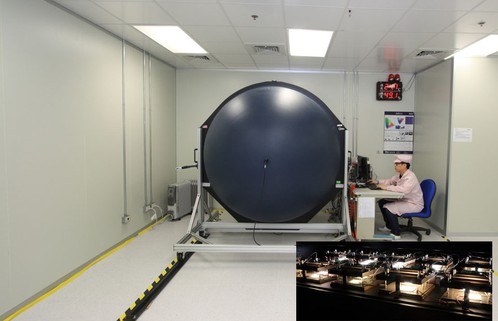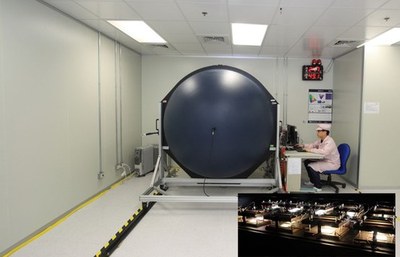"Beyond LM Testing - A New Metric for Quality over Lifetime" by Thor Scordelis
In a recent blog post, the United States Department of Energy’s Jim Brodrick noted that solid-state lighting standards and testing methods “may not be glamorous, but they’re essential for the success of any technology, and SSL is no exception.” Certainly, this is true with respect to lumen quality, and for many years, the LM-80 standard, used to measure lumen maintenance of LED packages and modules, has sufficed. However, with the growing adoption of LED technology has come higher customer awareness and expectations. “Good enough” isn’t good enough anymore.
Color maintenance, another element of light quality, has also been undergoing greater scrutiny. As customers moved from halogen to metal halide accent lighting, they assumed that the color between lamps would remain relatively consistent until the lamp stopped working.
However, “lifetime” was conveniently being redefined to mean lumen lifetime, not necessarily quality of light lifetime. Digging into a data sheet may have yielded an esoteric note about lumen life of, say, 12,000 hrs. and a color life of less than 8,000 hrs. But few would go to this trouble. Quality was sliced off the datasheet under the rationalization that customers wouldn’t know or care. And then the lamps shifted color or failed well before expected, or, despite being rated a premium “90” CRI, it turned out that they weren’t really “90” after all.
Enter “C”
The lighting industry is familiar with the convention for describing the lumen maintenance of a LED luminaire or light source. The “L” designation stands for the percentage of light output in lumens that remains at a point of time in the future, e.g., “L70” represents 70% lumens. For many applications, however, useful life is best measured not by lumen maintenance, but rather by color maintenance, and locating the color maintenance specification for an LED source can be difficult. Many manufacturers don’t provide this information, or they use different notations, such as “5 SDCM” or “+/- 200K in CCT over life.”
Enter the “C” notation. Devised as a simple, real-world alternative to other color maintenance specifications, the “C” notation stands for a light source’s future color point, compared to its original color point at the date of manufacture, as measured in CIE 1976 color space. In layperson terms, it’s a metric for color maintenance.
For example, “C3 50,000hrs” is 0.003 ∆ u’,v’, or a distance of 0.003 as measured on the CIE 1976 color space, compared to its original color point, at 50,000 hrs. The CIE 1976 color space is used because the distance between points on the diagram is proportional to the perceived color difference, which is a significant advantage. The U.S. Environmental Protection Agency (EPA) “EnergyStar” program also uses CIE 1976, and most lighting academics worldwide agree that it is the most appropriate color space to use for measuring color change.
Similar to the metric that enables customers to compare two sources’ lumen life – e.g., L70, 35,000 hours vs. L90, 25,000 hours – adoption of the “C” metric provides a common yardstick for comparing the sources’ color maintenance over time.
Thanks to the Illuminating Engineering Society of North America (IESNA),
we have tools to back up data sheet lumen claims. These include the aforementioned LM-80, as well as TM-21, which establishes a standard way to use LM-80 data to make consistent lumen lifetime projections beyond the testing period.
For color consistency, there’s no industry-accepted projection standard akin to TM-21, so some individual manufacturers use their own projection methodologies. Without a standardized color maintenance projection methodology and results, examining the warranty is the best way to determine whether a manufacturer values the source’s ability to maintain color over time.
Adoption of the “C” notation will allow the industry to better move forward with educating customers on the basic aspects of light quality. It’s a simple device, yet grounded in established science, and enables a true comparison of products.
Thor Scordelis Thor Scordelis has more than 20 years of experience leading lighting design, engineering and marketing teams. Prior to his current role, Thor was PG&E’s Emerging Technologies-Lighting Portfolio Manager where he led the identification and assessment of lighting technologies to determine market viability and readiness. Thor was a steering committee member and contributor to the development of California’s Strategic Lighting Plan.
Thor Scordelis has more than 20 years of experience leading lighting design, engineering and marketing teams. Prior to his current role, Thor was PG&E’s Emerging Technologies-Lighting Portfolio Manager where he led the identification and assessment of lighting technologies to determine market viability and readiness. Thor was a steering committee member and contributor to the development of California’s Strategic Lighting Plan.
This article was published in the LED professional Review - Issue 40 (Nov./Dec. 2013) on page 4.


